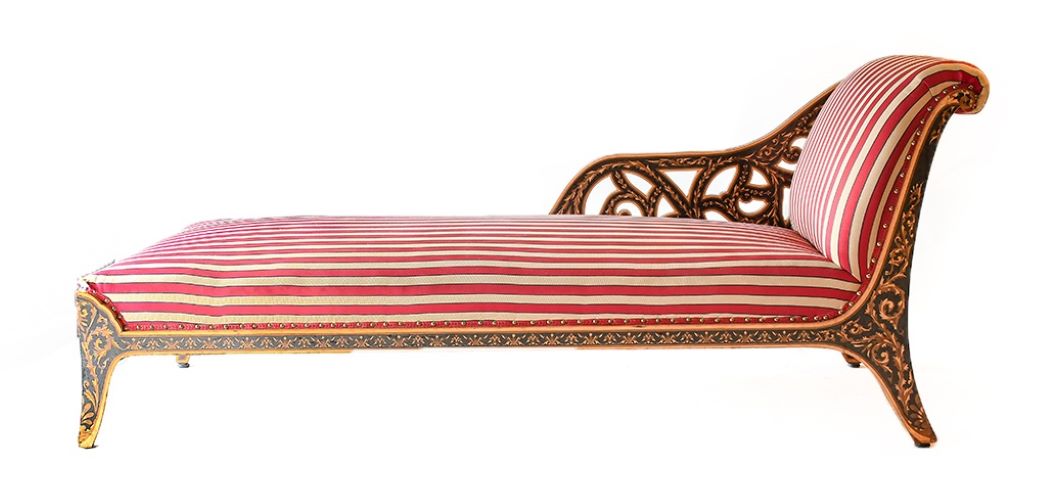Chaise longue makes thousands in sale
A beautifully decorated ebonised and marquetry inlaid chaise longue sold for a hammer of £26,000 in Tennants Auctioneers’ recent Spring Fine Sale on March 19.
The chaise longue had been consigned by a private client, who had inherited it from his father, who had purchased it from the trade; it is thought that the chaise was designed by Owen Jones, one of the most influential designers of the 19th century and made by famed London cabinet makers Jackson and Graham.

Impressive results were also seen for a French Louis XV style kingwood and gilt metal mounted bombé-shaped commode, made in the late 19th century in the manner of Francois Linke, which sold for £22,000.
A circa 1900 George III style carved pine twin-pedestal partners’ desk sold for £10,000, while an imposing Victorian carved mahogany mirror-backed sideboard sold for £6,000, a part 17th-century Spanish stained and polychromed bed with provenance from the 7th Earl of Durham sold for £8,500 and generating interest from the United States was an 18th-century American cherry and pine-lined Chippendale style chest of drawers sold for £3,000.
Upholstered furniture from well-regarded 19th and early 20th-century makers continues to draw strong bidding, with the likes of a mid-19th century pair of Victorian mahogany armchairs by Mackenzie and Crosbie of Edinburgh selling for £5,500, and a late 19th/early 20th-century deep-seated armchair by Howard and Sons fetched £4,800.
A private collection of needlework panels dating from the 17th century drew considerable excitement ahead of the sale, and the nine works sold for a total hammer price of £36,500. Of particular note were those depicting Charles I and Henrietta Maria, which sold for £8,000, and Faith, Hope and Charity sold for £5,800. It is understood that these two panels, in addition to two others in the collection, were once part of the Percival D. Griffiths Collection which is regarded as one of the finest collections of early English furniture and needleworks to have ever been assembled. These needlework panels were dispersed from Griffiths’ collection at Christie, Manson & Wood in 1939.
Notable results for other works of art included a set of twelve 19th-century shop display tea canisters, decorated with landscapes painted on a black ground, that sold for £9,000, and a Russian bronze group of a mother and child on a mare with her foal beside after Eugeny Alexandrovich Lanceray, that sold for £8,500.
A 6cm high Chinese porcelain brush washer, Qianlong reign but probably late 19th century, topped the Asian Art section of the sale, after selling for £12,000. Strong prices were also achieved for a pair of gilt metal mounted Chinese porcelain Yen Yen vases, with Kangxi porcelain and later European metal mounts, which sold for £10,000; a Chinese porcelain seal paste box and cover circa 1936, which fetched £4,000, and an Indian bronze figure of Shiva from the 18th or 19th century, which sold for £6,000.

Unusual clocks continue to attract strong prices, with good results achieved for a good quality Edwardian mahogany tubular bell chiming longcase clock, which sold for £5,400, and a fine fifteen-day duration striking table clock made circa 1790 by Thomas De Lasalle of London, which sold for £3,500. Also of interest were a circa 1890 carriage clock retailed by R.Wenrly & Co., Paris that had an unusual champleve and enamel decoration, which fetched £2,200, and a rare 1980s Pendule D’Officier electronic marble manel timepiece by Patek Philippe with its original box and paperwork, selling for £4,500.
Finally, a good late 17th-century Aubusson verdure tapestry, woven in silks and wool depicting a rural scene of birds and animals, which sold for £5,000.



